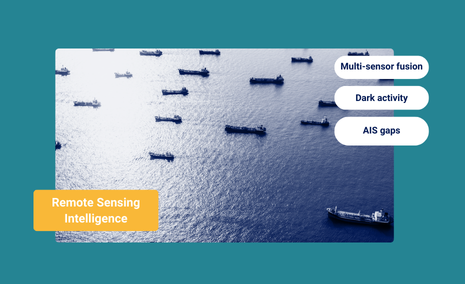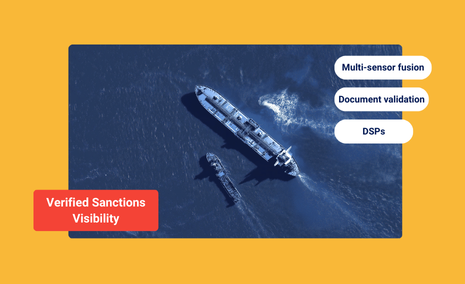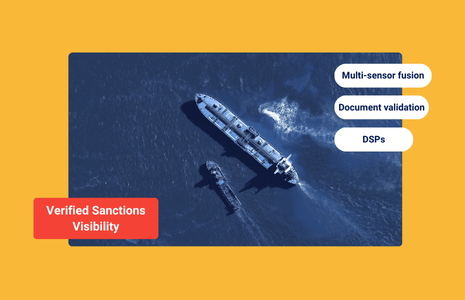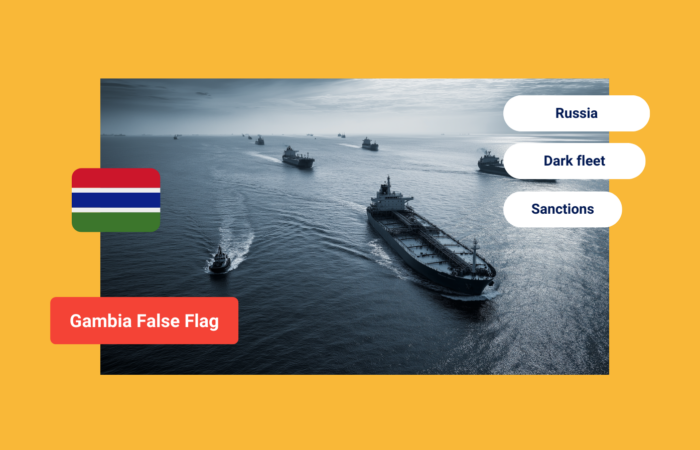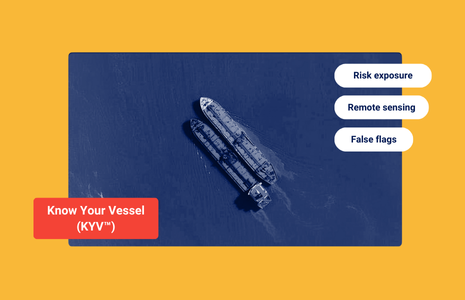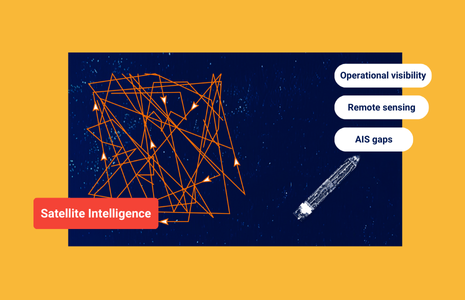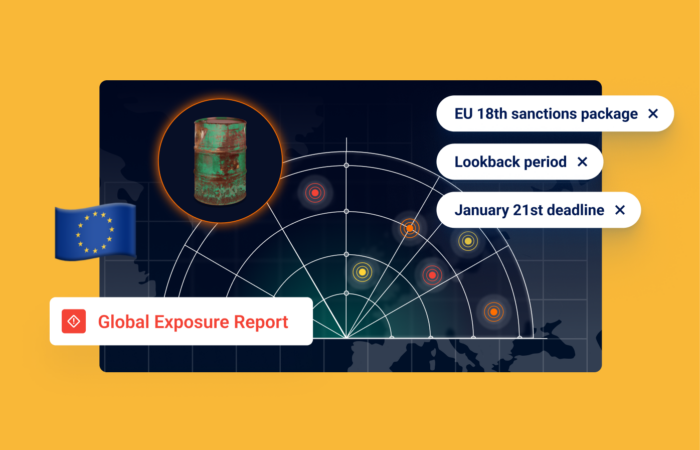2024 Maritime Trends: The Year of Survival & Success
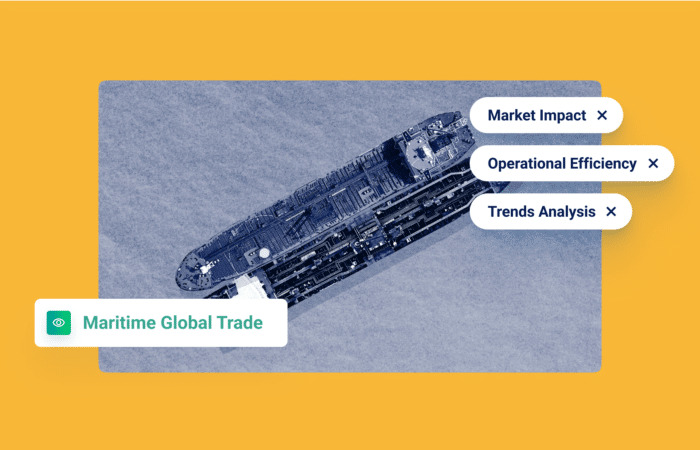
What’s inside?
The year 2024 stands as a pivotal point, where knowing who you’re doing business with and responding to changes in the maritime landscape is no longer just beneficial, but essential for survival and success.
Global supply chains, as well as trading and shipping, have experienced a lot in recent years: “…an unexpected war in Europe and in recent months a severe drought has limited access to the Panama Canal and forced some cargo to be transported across the isthmus by rail instead of ship. Now, a worsening conflict in the Middle East threatens routine commerce,” The Washington Post explains.
Let’s look at how Maritime AI™ technology will be crucial in 2024 for enabling businesses to stay afloat in these turbulent times.
Due Diligence: a Necessity in Modern Maritime Operations
Due diligence has recently taken center stage, with regulators intensifying their focus. The EU’s 12th sanctions package against Russia is focused on imposing additional import and export bans on Russia, combatting sanctions circumvention, and closing loopholes. Businesses in the maritime sector are finding it increasingly challenging to ensure compliance.
Possessing visibility into who you’re working with has become more important than ever to protect your business and reputation. Staying on top of hidden connections, future-proofing audit reports, and customizing sanctions and watch lists to monitor any compliance risk change are a few ways to accomplish this. Organizations looking to minimize this risk should ensure they have actionable visibility into the following areas:
- Due diligence for any person or company across the supply chain, including all seven levels of ownership, up to the ultimate beneficial owner (UBO)
- Complex ownership structures
- Shell companies
- New companies formed a short time ago with only one vessel to their name
Geopolitical Shifts and Sanction Dynamics
With geopolitical events such as Russia’s ongoing war with Ukraine, Venezuela’s dynamic sanctions situation, and, most recently, the ongoing crisis in the Red Sea region, trade flows are shifting and vessels now have to sail routes they have never sailed before. This will have a direct impact on prices, insurance, bunkering hubs, etc.
With the ongoing crisis in the Red and Arabian Seas, many shipping companies have announced they will divert their shipments along different routes. Many vessels are taking a longer, safer route via the Cape of Good Hope, which can add up to 10-14 days to their voyages. If this is sustained for a long period of time, it will likely have a harmful impact on the global supply chain and economy.
Data from our recent Q4 Trade Patterns & Risk Insights Report clearly shows this increase. The last week of December 2023 shows a 450% increase in container vessels and a 100% increase in tankers visiting the Cape of Good Hope for the first time during their operational lifetimes, compared to the rest of 2023.

This route is less controlled than the Suez Canal, so bad actors can easily hide illicit activities, and stakeholders should monitor their fleets closely.
The Emergence of Dark and Gray Fleets
The United Nations‘ shipping agency adopted a resolution targeting illicit shipping practices from the so-called unregulated “shadow fleet” in an effort to clamp down on unsafe activities at sea.
After the West’s economic vice tightened on Russia for its Ukraine war, there was an increase in deceptive shipping practices (DSPs) – a combination of dark activities, location (GNSS) manipulation, and ship-to-ship meetings. New hubs have continued to pop up to conceal illicit activities as old ones draw increased scrutiny, and Iran and Russia have strengthened their trade routes.
We found that the dark fleet grew by 29% in Q4 2023, to include over 1,800 vessels. For the same time period, the gray fleet decreased by 24%. As the regulations tighten, bad actors are going back to trying to hide their behavior, and not simply conceal origins and ownership. This again shows how important it is to know who you’re doing business with.
The Need for Agile and Predictive Solutions
There’s a growing need for solutions that are not only agile, but predictive. The ability to anticipate trends and adapt to changing requirements is becoming essential for shipping players and stakeholders to stay on top of the game.
Responding to Regulatory Clampdowns
2023 witnessed a notable clampdown on Russia, with regulators putting in concerted efforts to thwart attempts by bad actors to circumvent rules. This has highlighted the necessity for increased diligence and enforcement in the maritime sector.
Implications for Insurance and Business Operations
Understanding these trends is crucial for businesses, particularly concerning insurance costs and operational predictability. Visibility into these changes and the ability to anticipate upcoming trends are key to maintaining a competitive edge.
Tightening the Net
Knowing who you’re doing business with has never been more important than it will be this year. The tightening regulatory environment, coupled with geopolitical shifts and the emergence of the dark and gray fleet, underscores the need for advanced, responsive AI solutions.
Find Out More
Trending
- The EU’s 18th Sanctions Package Lookback Started. Trading Russian Products? You're At Risk. Nov 24, 2025
- Tanker Freight Rates Hit Five-Year High Amid Russian Oil Sanctions Shake-Out Nov 6, 2025
- Sanctioned, Stateless, and Still Sailing: Expert Insights from the Frontlines of Maritime Sanctions Nov 3, 2025
